Jaguar XF Saloon (2008-2015) engines, drive and performance
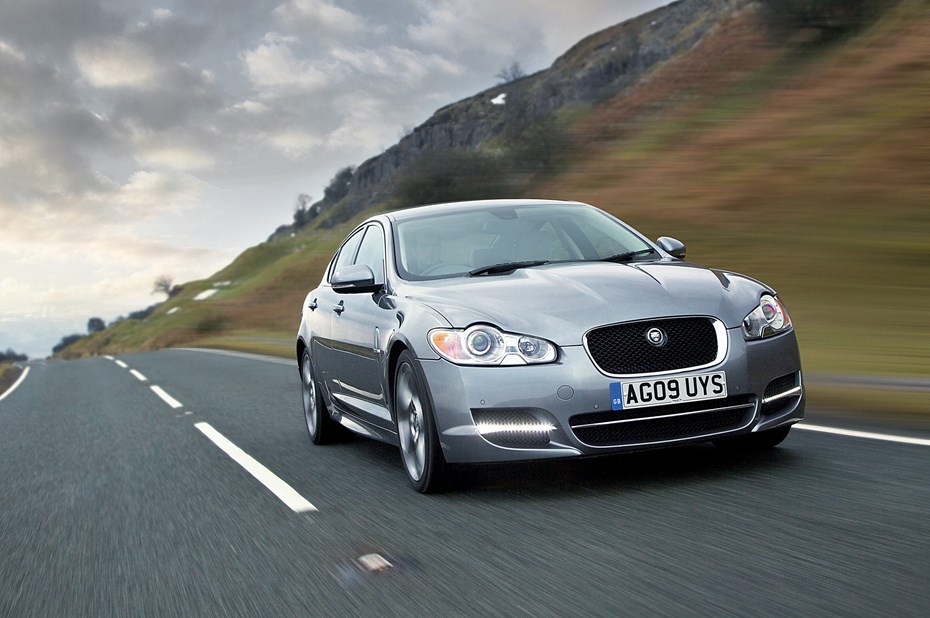
The Jaguar XF started out life with the choice of either 3.0-litre V6 or 4.2-litre petrol V8s, later changing to a 5.0-litre V8, with the supercharged 5.0 V8 XFR as a separate model. If Jaguar XF performance is your thing then the V8 is the one to go for. Initially, these petrol engines weren’t the big sellers and always lost out in sales to the diesels.
In June 2012, Jaguar decided to make the petrol XF more appealing to sporting drivers with the introduction of a supercharged 3.0 V6 engine with 340bhp that replaced both the previous motors.
It covers 0-62mph in 5.9 seconds and has a 155mph limited top speed. It drives through the eight-speed automatic gearbox that was standardised across the XF range in mid-2011 and is a smooth, rapid performer.
Diesel engines
The Jaguar XF started life with the 2.7-litre V6 turbodiesel engine from the S-type, which was quickly uprated to 3.0-litres in late 2008 and called the XF Diesel S. This 3.0-litre boasts 275bhp, but it’s also available with 240bhp to give better economy and emissions.
In mid 2011, the 2.2-litre turbodiesel arrived to give XF sales a huge shot in the arm to compete with the BMW 520d. The 2.2 engine was initially offered in 197bhp form with an eight-speed automatic gearbox, but a 161bhp version was then added to the range at the beginning of 2012. While the 3.0 V6 diesels are beautifully smooth and refined, the 2.2 is a little more audible when asked to pull hard. The 2.2 is also not as economical in normal driving as Jaguar’s claimed figures, which is disappointing, but it’s a keen and eager engine and suits the XF well. It was further revised in late 2013 dropping emissions from 135g/km to 129, and boosting claimed fuel economy from 55mpg to nearly 58mpg.
Parkers recommends
There’s little point in looking at any other engine than the 161bhp 2.2 diesel for its mix of economy, emissions and performance.
The XF’s low, wide stance gives it good body control without having to make the suspension stiff and as a result the Jaguar is a saloon that is genuinely enjoyable to drive without making occupants suffer a harsh ride. Although the initially light steering leaves you unconvinced that the car will feel truly sporty, this is only temporary.
On the move the steering is heavier, but light and precise enough to make small changes of direction – encouraging a nice flowing motion when driving on twisty roads. There are three levels of stability control, the first brings the car back into line after a hint of untidiness, the second level allows a degree of indulgence by the driver before pulling the car back into line while the third completely disables the system.
Revised cars from March 2009 come with a system called Jaguar Drive Control which has three different modes, activated by switches next to the gear selector. There’s a standard mode, winter mode for low grip conditions and dynamic mode. The latter increases throttle response and quickens the gear changes.


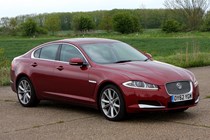

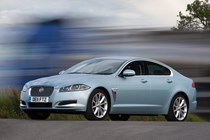
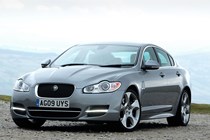


.jpg)
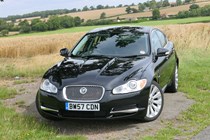
.jpg)
.jpg)
.jpg)
.jpg)
.jpg)
.jpg)
.jpg)
.jpg)
.jpg)
.jpg)
.jpg)
.jpg)
.jpg)
.jpg)
.jpg)
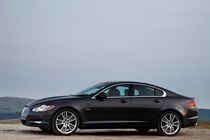
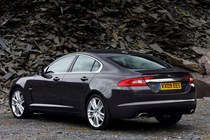
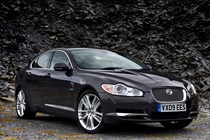

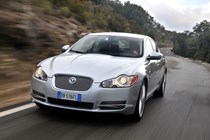
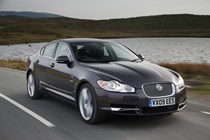
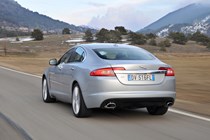
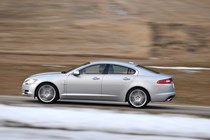
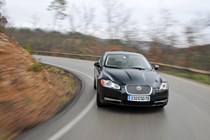
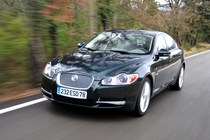
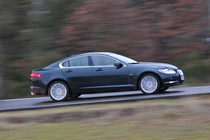
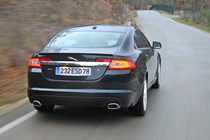
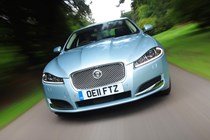
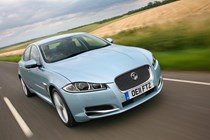
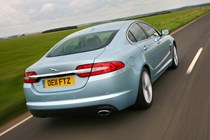
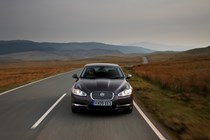
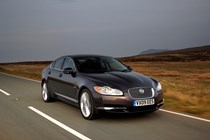

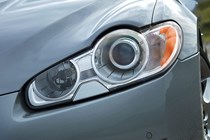
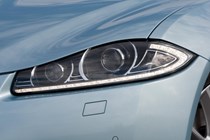

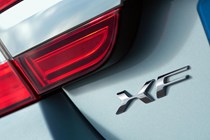
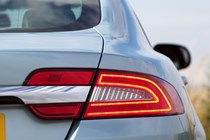

.jpg)
.jpg)
.jpg)
.jpg)
.jpg)
.jpg)
.jpg)
.jpg)
.jpg)
.jpg)
.jpg)
.jpg)
.jpg)
.jpg)
.jpg)
.jpg)
.jpg)
.jpg)
.jpg)
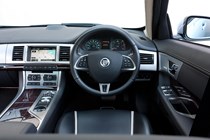
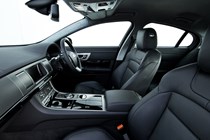
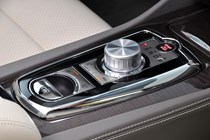
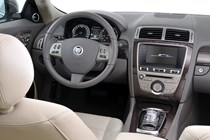
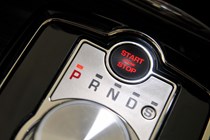
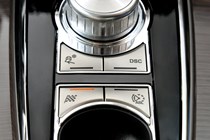
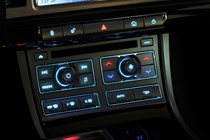
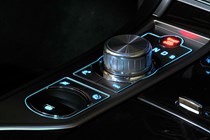

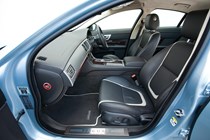
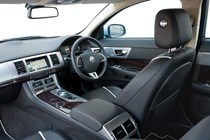
.jpg)
.jpg)
.jpg)
.jpg)
.jpg)
.jpg)
.jpg)
.jpg)
.jpg)
.jpg)
.jpg)
.jpg)
.jpg)
.jpg)
.jpg)
.jpg)
.jpg)
.jpg)
.jpg)
.jpg)
.jpg)
.jpg)
.jpg)
.jpg)
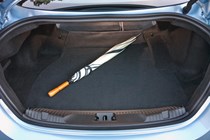
.jpg)
.jpg)
.jpg)
.jpg)
.jpg)
.jpg)
.jpg)
.jpg)
.jpg)
.jpg)






.jpg?quality=50)

.jpg?quality=50)
.jpg?quality=50)
.jpg?quality=50)
.jpg?quality=50)
.jpg?quality=50)
.jpg?quality=50)
.jpg?quality=50)
.jpg?quality=50)
.jpg?quality=50)
.jpg?quality=50)
.jpg?quality=50)
.jpg?quality=50)
.jpg?quality=50)
.jpg?quality=50)
.jpg?quality=50)
























.jpg?quality=50)
.jpg?quality=50)
.jpg?quality=50)
.jpg?quality=50)
.jpg?quality=50)
.jpg?quality=50)
.jpg?quality=50)
.jpg?quality=50)
.jpg?quality=50)
.jpg?quality=50)
.jpg?quality=50)
.jpg?quality=50)
.jpg?quality=50)
.jpg?quality=50)
.jpg?quality=50)
.jpg?quality=50)
.jpg?quality=50)
.jpg?quality=50)
.jpg?quality=50)











.jpg?quality=50)
.jpg?quality=50)
.jpg?quality=50)
.jpg?quality=50)
.jpg?quality=50)
.jpg?quality=50)
.jpg?quality=50)
.jpg?quality=50)
.jpg?quality=50)
.jpg?quality=50)
.jpg?quality=50)
.jpg?quality=50)
.jpg?quality=50)
.jpg?quality=50)
.jpg?quality=50)
.jpg?quality=50)
.jpg?quality=50)
.jpg?quality=50)
.jpg?quality=50)
.jpg?quality=50)
.jpg?quality=50)
.jpg?quality=50)
.jpg?quality=50)
.jpg?quality=50)

.jpg?quality=50)
.jpg?quality=50)
.jpg?quality=50)
.jpg?quality=50)
.jpg?quality=50)
.jpg?quality=50)
.jpg?quality=50)
.jpg?quality=50)
.jpg?quality=50)
.jpg?quality=50)